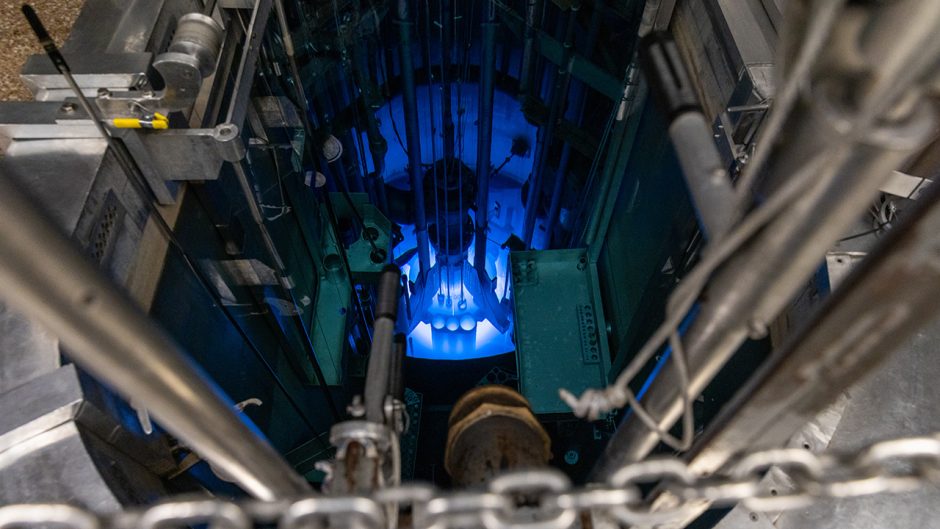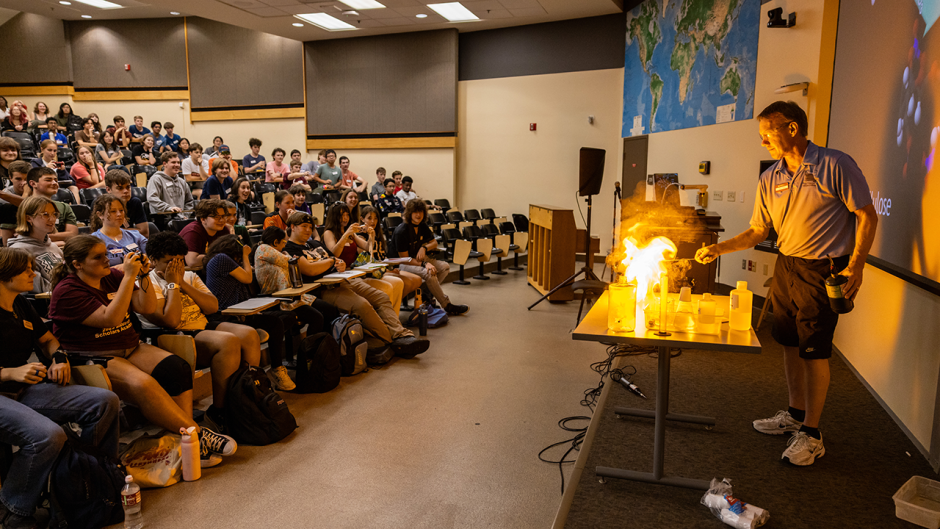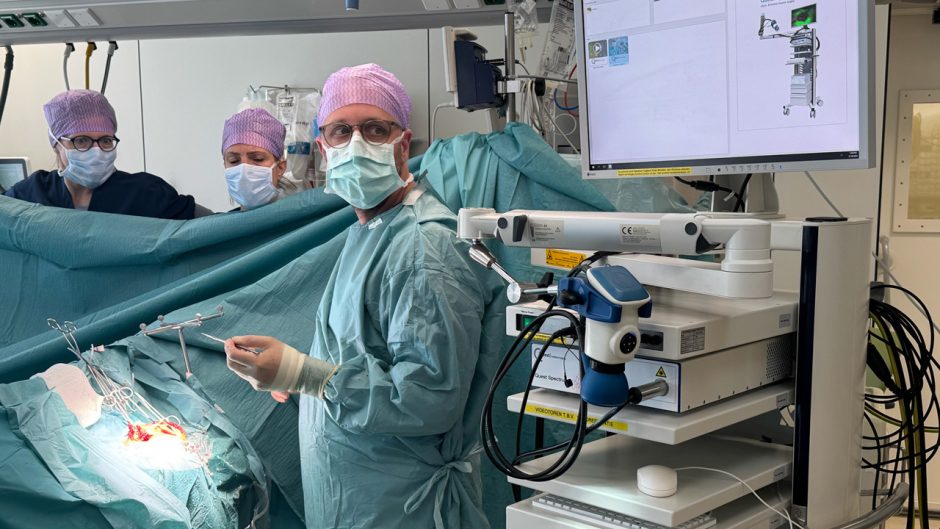March 25, 2021
Contact: Eric Stann, 573-882-3346, StannE@missouri.edu
The University of Missouri announced Thursday a collaboration agreement that includes several new instruments and a significant in-kind contribution from Thermo Fisher Scientific. The collaboration will provide some of the necessary tools needed for greater teamwork among researchers, clinicians and industry leaders when developing innovations for precision health care.
The instruments will be added to the Electron Microscopy Core Facility at MU, which will move into the NextGen Precision Health building scheduled to open in fall 2021. The facility houses electron microscopes and related equipment used to magnify and analyze images at the molecular level.
“The goal for NextGen Precision Health is to improve health outcomes for people across Missouri and beyond,” said Mun Choi, president of the University of Missouri. “We have the people in place capable of the groundbreaking, collaborative work needed to make that possible, and world-class researchers and clinicians need tools equal to the task in order to maximize their impact. This industry-leading equipment will allow NextGen to fulfill its promise.”
Jackie Lewis, vice chancellor for advancement at MU, believes the contribution is another example of the importance of philanthropy to the mission of the university.
“MU’s collaboration with Thermo Fisher Scientific brings together the best of scientific expertise and world-class instrumentation,” Lewis said. “This positions us at the forefront of discovery in both material and life sciences to create a better world – and that is the power of philanthropy.”
Developing innovations in precision health care are some of the key components of the systemwide NextGen Precision Health initiative, which includes collaborations among researchers at all four UM System universities — MU, University of Missouri-Kansas City (UMKC), Missouri University of Science and Technology (Missouri S&T) and University of Missouri-St. Louis (UMSL).
Three of the four UM System universities will now be home to advanced Thermo Fisher instruments for materials and life scientists. MU will add six instruments, including Thermo Scientific Krios G4 Cryo-TEM, Thermo Scientific Aquilos Cryo-FIB, Thermo Scientific Helios Hydra, and the Thermo Scientific Spectra 300 TEM. Missouri S&T has received the Thermo Scientific Nexsa XPS, Thermo Scientific Prisma Color SEM and Thermo Scientific Helios Hydra CX, and UMSL is housing the Thermo Scientific Apreo C HiVac.
Collaborations such as this will allow the initiative to fulfill its promise to the people across Missouri and beyond by bringing together all parts of the process for electron microscopy analysis into one centralized location.
“The instruments and in-kind contribution from Thermo Fisher mean NextGen will house a complete pipeline for electron microscopy analysis under one roof,” said Richard Barohn, executive director of NextGen Precision Health and the executive vice chancellor for health affairs at MU. “Through Thermo Fisher, we are obtaining the highest quality modern electron microscopy available anywhere in the U.S. It will enable our scientists to visualize not only cells but proteins in order to unravel the mystery of many diseases beyond our current capabilities.”
Tommi White is the director of the Electron Microscopy Core Facility and assistant research professor in the Department of Biochemistry, who also received her bachelor’s degree and doctorate in biochemistry from MU. White said the new equipment will allow researchers to be able to view molecular processes in higher resolution and perform more advanced experiments than with the facility’s current equipment. She believes this addition will now put MU into an elite category of research universities.
“We will be able to see, in great detail, how cells, tissues, bacteria, viruses and even proteins function,” White said. “These new instruments have broader functionality, including higher resolution imagery, accelerated data collection, and more automation. For instance, we will now be able to compare how diseased cells function compared to cells in a healthy state. Overall, this greatly expands our ability to do research, and by saving time with these instruments, we can produce faster research results to enable the discovery of potential treatments.”
In particular, proteins are involved in all aspects of development of diseases. By studying a protein’s structure under the magnified view of an electron microscope, this new view helps show how proteins function, which is crucial for developing innovative treatments for neurodegenerative diseases, such as Alzheimer’s disease and Parkinson’s disease. Also, researchers studying various aspects of COVID-19 have benefited previously from the use of cryo-transmission electron microscopy, one of the techniques possible with the Krios Cryo-TEM from Thermo Fisher.
Michael Chapman, chair of biochemistry in the School of Medicine and College of Agriculture, Food & Natural Resources, studies virus-host interactions. These are important not only in understanding and combating viral infection, but in developing viral drug delivery systems in gene therapy treatments for inherited diseases, an emerging facet of precision medicine.
“With this new equipment, we will visualize viruses in really high detail, for instance to see how they attach to the outside of cells,” Chapman said. “This will give us the information needed to modify the virus surface to target particular types of cells where treatment is needed and to minimize engagement of the patient’s immune system, which is designed to neutralize viruses but must be evaded during viral drug delivery.”
“We are dedicated to expanding access to electron microscopy and promoting STEM education through the use of high-powered technology,” said John Sos, president of materials and structural analysis at Thermo Fisher. “By collaborating with the University of Missouri and bringing life and materials science together in this way, we enable microscopists of the future to address novel scientific questions now.”
MU’s Electron Microscopy Core Facility will continue to be available for use by any industry, researcher or clinician associated with work at one of the four UM System universities.


![062625_CEI Aerial View_email-cropped[29] (1)](https://showme.missouri.edu/wp-content/uploads/2025/06/062625_CEI-Aerial-View_email-cropped29-1-940x529.jpg)


